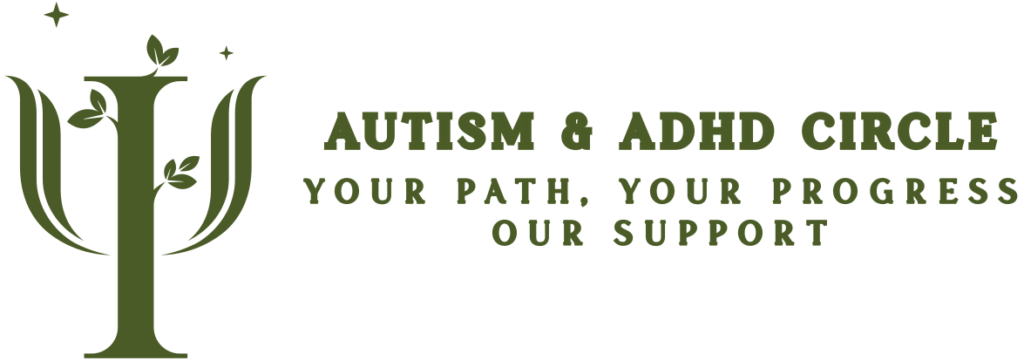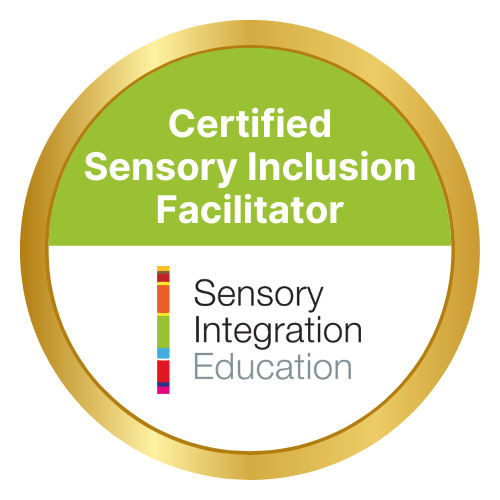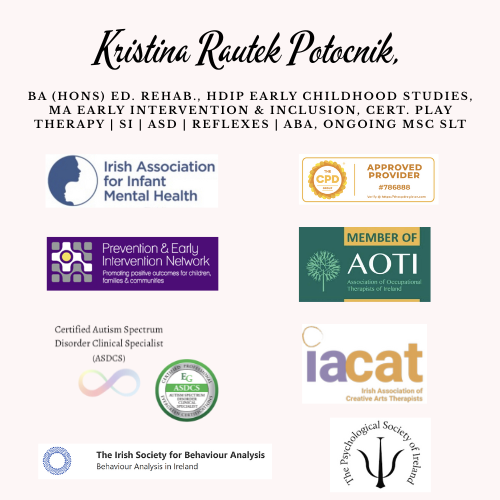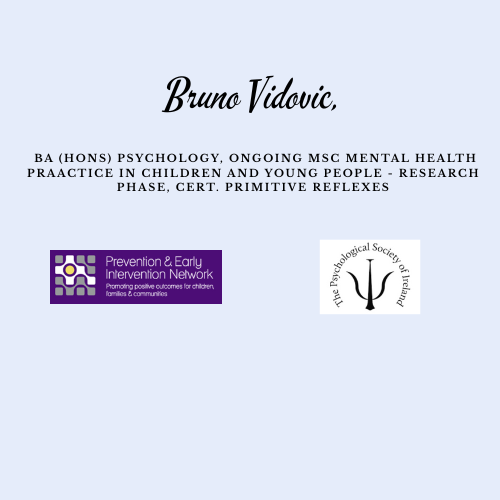Moro Reflex: Why Your Child Might Be Sensitive to Light and Sound

Author: Kristina Rautek Potocnik, BA (Hons) Ed. Rehab., HDip Early Childhood Studies, MA Early Intervention & Inclusion, Cert. Play Therapy | SI | ASD | Reflexes | ABA, ongoing MSc SLT
This blog explains what the Moro reflex is, what happens when it does not go away, and how it can affect children who are very sensitive to light, sound, and everyday situations. You will also learn how to recognise the signs and support your child with simple steps at home and with professional help.
Have you ever seen a baby suddenly stretch out their arms, open their hands, throw their head back, and then pull everything back in while crying? This quick movement is called the Moro reflex, also known as the startle reflex. It is one of the first reflexes a baby shows after birth and it normally disappears by four to six months of age.
The Moro reflex is a survival reaction that begins in the womb, sometimes as early as 28 weeks of pregnancy. It helps the baby take their first breath, react to danger, and connect with the caregiver. When a baby hears a loud sound, sees a bright light, or feels like they are falling, this reflex is activated. It makes the body go into “fight or flight” mode, like a personal alarm system.
But what happens if this reflex doesn’t go away?
When the Moro reflex stays active past six months, it is called a retained Moro reflex. This means the child’s nervous system did not fully mature, and their body is still reacting like a newborn baby. The child may feel like the world is too loud, too bright, or too fast. They may become scared easily, have trouble focusing, and feel overwhelmed in everyday situations.
Children with a retained Moro reflex may show many different signs. They might be very sensitive to light, sounds, or touch. They could have trouble sleeping, get upset easily, or struggle with balance and coordination. Some children may cry a lot, have mood swings, or find it hard to calm down. Others might feel anxious, cling to their parents, or become very tired after school because their nervous system is always “on.”
These children are often described as “highly sensitive” or “emotional,” but the problem may actually be neurological. A child with a retained Moro reflex is not being difficult — their brain is working too hard to protect them, even when there is no real danger.
This reflex can also affect learning. When the body is in fight or flight mode, the brain cannot relax or pay attention. As one therapist said, “You can’t learn to read while running from a lion.” If a child sees bright lights in the classroom or hears loud background noise, their brain may treat it like danger. Instead of learning, they focus on surviving.
So how can you know if your child still has the Moro reflex?
There are simple tests you can try at home. One test is to ask your child to balance on one foot with arms up. If they sway or fall, it might be a sign. Another test is to have them cross one leg over the other, lift their arms above their head, and then touch their toes. Poor balance during this exercise is another sign. A final test is to have your child stand straight with their eyes closed and fall backward into your arms. If they throw their arms out suddenly, instead of falling with arms crossed, the Moro reflex may still be active.
What causes the Moro reflex to stay?
There are several reasons. A difficult birth, not enough tummy time, premature birth, or developmental delays can slow down the integration of primitive reflexes like the Moro. These reflexes usually disappear when the brain and body develop better control, but sometimes the process gets “stuck.”
What can you do to help?
One popular exercise is the “Starfish.” The child sits in a relaxed position with their arms and legs crossed. Then, they open their arms and legs wide while lifting their head and looking up. After that, they return to the starting position and switch sides. This movement copies the pattern of the Moro reflex and helps the brain learn a new, calmer response. Doing these kinds of exercises for just five minutes a day can help the reflex go away in four to six weeks.
At home, it also helps to create a calming environment. Talk to your child about their feelings and explain what the “lizard brain” is — the part of the brain that controls fear. Help your child “calm the lizard” by imagining it resting and breathing slowly. You can also take breaks during the day, go for short walks, offer snacks and water, and do deep breathing together.
In the end, a retained Moro reflex is not anyone’s fault — and it does not mean something is “wrong” with your child. It simply means their body is asking for help to grow and feel safe. With the right support, your child can become more confident, calm, and ready to enjoy the world around them.
Latest Posts
- How children make sense of the world through their senses
- How your baby learns about the world through their senses
- Helping your child grow stronger through movement and play
- Understanding How Early Intervention Helps Children Learn, Move, and Connect
- How to Recognise Tactile Defensiveness and Help Your Child Feel Safe
- Understanding Feeding Challenges and How to Support Your Child at Home
- Let’s Talk Sitting: Exploring Floor Seating Options
- Retained Primitive Reflexes: The Hidden Cause Behind Developmental Struggles
- Where Curiosity Blossoms: How Children's Play Nurtures Growth for All
- Helping Your Child Through Stress: A Gentle Guide for Parents
- Sweet Little Lies – How to Recognise and Respond with Care
- Chores Are More Than Just Tasks – They’re a Tool for Growing Independence, Focus, and Confidence
- How to Help Children Develop Emotional Intelligence
- Blending Technology and Care: How VR Meta Quest Supports Children at NeuroNest
- A simple guide for parents who want to raise confident, happy children
- Setting Boundaries with Love: A Simple 3-Step Guide for Parents
- Understanding Behavior Through the Nervous System
- A Compassionate Lens on Dysregulation in Non-Speaking Autistic Individuals
- Supporting Development Through Movement: The Role of the Swing in Early Intervention
- Blending Tradition and Innovation: How NeuroNest Supports Your Child’s Unique Journey
- When Movement Meets Innovation: Supporting Child Development with GoBalance
- Why Visual Perception Matters for Everyday Life and Development
- Benefits of Chess in Early Intervention
- Building Healthy Nutrition from the Start
- A Journey Back to Your True Self
- Supporting Your Child’s Hand Skills for Confident Writing
- Blending the Best of Both Worlds
- Helping Toddlers Eat Well: A Parent’s Guide
- Why Tummy Time Matters for Your Baby's Development
- Helping Your Child Build Everyday Independence
- Who Are the Disconnected Kids?
- From First Tries to Automatic Habits: Understanding the Stages of Skill Learning
- Why a Child’s Level of Alertness Matters for Memory and Learning
- Early brain development starts before birth
- Why Slowing Down, Adapting Tasks, and Adding Breaks Helps Children Learn Better
- Why ADHD, Autism, Dyslexia and Other Challenges Need a New Approach
- The surprising power of copying in child development
- Books are more than just language tools—they’re powerful allies in sensory and motor development.
- Rethinking sensory support: moving beyond expensive rooms toward everyday understanding.
- Understanding how fear develops in a child’s brain
- Understanding how an early baby reflex can affect your child’s daily life
- A gentle start into baby development through movement and bonding
- A child-centred, research-informed approach that uses the power of play to support communication, emotional regulation, motor development, and meaningful growth from infancy to twelve years.
Our Partners




Our Memberships


